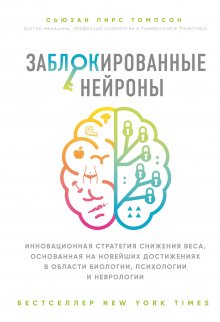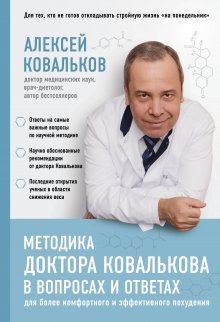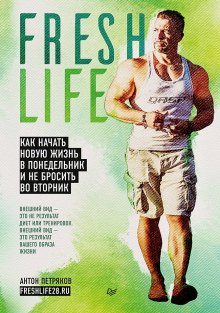Сьюзан Томпсон - Заблокированные нейроны

Скачивание начинается... Если скачивание не началось автоматически, пожалуйста нажмите на эту ссылку.
Жалоба
Напишите нам, и мы в срочном порядке примем меры.
Описание книги "Заблокированные нейроны"
Описание и краткое содержание "Заблокированные нейроны" читать бесплатно онлайн.
13
Baumeister, R. F., Bratslavsky, E., Muraven, M., & Tice, D. M. (1998). Ego depletion: Is the active self a limited resource? Journal of Personality and Social Psychology, 74(5), 1252-1265. doi: 10.1037/0022-3514.74.5.1252
14
Vohs, K. D., Baumeister, R. F., Schmeichel, B. J., Twenge, J. M., Nelson, N. M., & Tice, D. M. (2008). Making choices impairs subsequent self-control: A limited-resource account of decision making, self-regulation, and active initiative. Journal of Personality and Social Psychology, 94(5), 883-898. doi: 10.1037/0022-3514.94.5.883
15
Danziger, S., Levav, J., Avnaim-Pesso, L., & Kahneman, D. (2011). Extraneous factors in judicial decisions. Proceedings of the National Academy of Sciences of the United States of America, 108(17), 6889-6892. doi: 10.1073/pnas.1018033108
16
Gailliot, M. T., Baumeister, R. F., DeWall, C. N., Maner, J. K., Plant, E. A., Tice, D. M…. Schmeichel, B. J. (2007). Self-control relies on glucose as a limited energy source: Willpower is more than a metaphor. Journal of Personality and Social Psychology, 92(2), 325-336. doi: 10.1037/0022-3514.92.2.325
17
Hofmann, W., Baumeister, R. F., Förster, G., & Vohs, K. D. (2012; 2011). Everyday temptations: An experience sampling study of desire, conflict, and self-control. Journal of Personality and Social Psychology, 102(6), 1318. doi: 10.1037/a0026545
18
Baumeister, R. F. (2014). Self-regulation, ego depletion, and inhibition. Neuropsychologia, 65, 313-319. doi: 10.1016/j.neuropsychologia.2014.08.0
19
Gailliot, M. T., & Baumeister, R. F. (2007). The physiology of willpower: Linking blood glucose to self-control. Personality and Social Psychology Review, 11(4), 303-327. doi: 10.1177/1088868307303030
20
McCullough, M. E., & Willoughby, B. L. B. (2009). Religion, self-regulation, and self-control: Associations, explanations and implications. Psychological Bulletin, 135(1), 69-93. doi: 10.1037/a0014213
21
Luders, E., Toga, A. W., Lepore, N., & Gaser, C. (2009). The underlying anatomical correlates of long-term meditation: Larger hippocampal and frontal volumes of gray matter. Neuroimage, 45(3), 672-678. doi: 10.1016/j.neuroimage.2008.12.061
22
McKellar, J., Stewart, E., & Humphreys, K. (2003). Alcoholics anonymous involvement and positive alcohol-related outcomes: Cause, consequence, or just a correlate? A prospective 2-year study of 2,319 alcohol-dependent men. Journal of Consulting and Clinical Psychology, 71(2), 302-308. doi: 10.1037/0022-006X.71.2.302
23
Greer, S., Goldstein, A., & Walker, M. (2013). The impact of sleep deprivation on food desire in the human brain. Nature Communications, 4, 2259 doi: 10.1038/ncomms3259
24
DeSteno, D., Li, Y., Dickens, L., & Lerner, J. S. (2014). Gratitude: A tool for reducing economic impatience. Psychological Science, 25(6), 1262-1267. doi: 10.1177/0956797614529979
25
Wansink, B., & Sobal, J. (2007). Mindless eating: The 200 daily food decisions we overlook. Environment and Behavior, 39(1), 106-123. doi: 10.1177/0013916506295573
26
Dulloo, A. G., & Jacquet, J. (1998). Adaptive reduction in basal metabolic rate in response to food deprivation in humans: A role for feedback signals from fat stores. The American Journal of Clinical Nutrition, 68(3), 599.
27
Speakman, J. R., & Westerterp, K. R. (2013). A mathematical model of weight loss under total starvation: Evidence against the thrifty-gene hypothesis. Disease Models & Mechanisms, 6(1), 236-251. doi: 10.1242/dmm.010009
28
Rosenkilde, M., Auerbach, P., Reichkendler, M. H., Ploug, T., Stallknecht, B. M., & Sjödin, A. (2012). Body fat loss and compensatory mechanisms in response to different doses of aerobic exercise – a randomized controlled trial in overweight sedentary males. American Journal of Physiology: Regulatory, Integrative and Comparative Physiology, 303(6), 571-579. doi: 10.1152/ajpregu.00141.2012
29
An fMRI shows differences between lean and obese after eating. Puzziferri, N., Zigman, J. M., Thomas, B. P., Mihalakos, P., Gallagher, R., Lutter, M…. Tamminga, C. A. (2016). Brain imaging demonstrates a reduced neural impact of eating in obesity. Obesity, 24(4), 829-836. doi: 10.1002/oby.21424
30
Satter, E. M. (2005), Your Child’s Weight: Helping Without Harming, Madison, WI: Kelsey Press.
31
Wansink, B., Painter, J., & North, J. (2005). Bottomless bowls: Why visual cues of portion size may influence intake. Obesity Research, 13(1), 93-100. doi:10.1038/oby.2005.12
32
Lisle, D. J. & Goldhamer, A. (2003) The Pleasure Trap. Summertown, TN: Healthy Living Publications.
33
Malaisse, W. J., Vanonderbergen, A., Louchami, K., Jijakli, H., & Malaisse-Lagae, F. (1998). Effects of artificial sweeteners on insulin release and cationic fluxes in rat pancreatic islets. Cellular Signalling, 10(10), 727-733. doi: 10.1016/S0898-6568(98)00017-5
34
Malaisse, W. J., Vanonderbergen, A., Louchami, K., Jijakli, H., & Malaisse-Lagae, F. (2011). Intake of high-intensity sweeteners alters the ability of sweet taste to signal caloric consequences: Implications for the learned control of energy and body weight regulation. The Quarterly Journal of Experimental Psychology, 64(7), 1430-1441. doi: 10.1080/17470218.2011.552729
35
Ingalls, A. M., Dickie, M. M., & Snell, G. D. (1996). Obese, a new mutation in the house mouse. Obesity Research, 4(1), 101-101. doi: 10.1002/j.1550-8528.1996.tb00519.x
36
Zhang, Y., Proenca, R., Maffei, M., Barone, M., Leopold, L., & Friedman, J. M. (December 1994). Positional cloning of the mouse obese gene and its human homologue. Nature, 372(6505), 425-432. doi: 10.1038/372425a0
37
Stavro, B. (1995, September 5). With fat-loss drug, Amgen takes on a weighty challenge: Pharmaceuticals: Biotech firm faces much risk and expense in getting the medication from the laboratory to the marketplace. Los Angeles Times. Retrieved from http://articles.latimes.com/1995-09-05/business/fi-42478_1_fat-drug
38
Münzberg, H., & Myers, M. G. (2005). Molecular and anatomical determinants of central leptin resistance. Nature Neuroscience, 8(5), 566-570. doi: 10.1038/nn1454
39
Lustig, R. H. (2006). Childhood obesity: Behavioral aberration or biochemical drive? Reinterpreting the first law of thermodynamics. Nature Clinical Practice Endocrinology & Metabolism, 2(8), 447-458. doi: 10.1038/ncpendmet0220
40
Pinhas-Hamiel, O., Lerner-Geva, L., Copperman, N., & Jacobson, M (2007). Lipid and insulin levels in obese children: Changes with age and puberty. Obesity, 15, 2825-2831. doi: 10.1038/oby.2007.335
41
Grill, H., Schwartz, M., Kaplan, J., Foxhall, J., Breininger, J., & Baskin, D. (2002). Evidence that the caudal brainstem is a target for the inhibitory effect of leptin on food intake. Endocrinology, 143(1), 239-246. doi: 10.1210/en.143.1.239
42
Marshall, R. O., & Kooi, E. R. (1957). Enzymatic conversion of D-glucose to D-fructose. Science, 125(3249), 648-649. doi: 10.1126/science.125.3249.648
43
Nguyen, P., Lin, S., & Heidenreich, P. (2016). A systematic comparison of sugar content in low-fat vs regular versions of food. Nutrition & Diabetes, 6, e193.
44
Hanna, J. M., & Hornick, C. A. (1977). Use of coca leaf in southern Peru: Adaptation or addiction. Bulletin on Narcotics, 29(1), 63.
45
Verebey, K., & Gold, M. S. (1988) From coca leaves to crack: The effects of dose and routes of administration in abuse liability. Psychiatric Annals, 18, 513-520. doi: 10.3928/0048-5713-19880901-06
46
Kenny, P. J., & Johnson, P. M. (2010). Dopamine D2 receptors in addiction-like reward dysfunction and compulsive eating in obese rats. Nature Neuroscience, 13(5), 635-641. doi: 10.1038/nn.2519
47
Lenoir, M., Serre, F., Cantin, L., & Ahmed, S. (2007). Intense sweetness surpasses cocaine reward. Plos One, 2(8), e698. doi:10.1371/journal.pone.0000698
48
Hyman, M. (2014) The Blood Sugar Solution 10-Day Detox Diet. New York: Little, Brown and Company, 29.
49
It should be noted that there is variability in the adaptation of rats to foot shocks. This may require that the subjects be grouped as sensitive or resistant to foot shocks. For example, see Chen, B. T., Yau, H-J, Hatch, C., Kusumoto-Yoshida, I., Cho, S. L., Hopf, F. W., & Bonci, A. (2013). Rescuing cocaine-induced prefrontal cortex hypoactivity prevents compulsive cocaine seeking. Nature, 496, 359. doi:10.1038/nature12024
50
Kenny, P. J., & Johnson, P. M. (2010). Dopamine D2 receptors in addiction-like reward dysfunction and compulsive eating in obese rats. Nature Neuroscience, 13(5), 635-641. doi: 10.1038/nn.2519
51
Kessler, D. A. (2009). The End of Overeating; Taking Control of the Insatiable American Appetite. New York: Rodale; Moss, M. (2014). Salt Sugar Fat: How the Food Giants Hooked Us. New York: Random House.
52
Bolhuis, D., Costanzo, A., Newman, L., & Keast, R. (2016). Salt promotes passive overconsumption of dietary fat in humans. Journal of Nutrition, 146(4), 838-845. doi:10.3945/jn.115.226365
53
Stice, E., Burger, K., & Yokum, S. (2013). Relative ability of fat and sugar tastes to activate reward, gustatory, and somatosensory regions. The American Journal of Clinical Nutrition, 98(6), 1377-1384. doi: 10.3945/ajcn.113.069443
54
Schulte, E., Avena, N., & Gearhardt, A. (2015). Which foods may be addictive? The roles of processing, fat content, and glycemic load: E0117959. PLOS One, 10(2). doi: 10.1371/journal.pone.0117959.
55
Lustig, R. (2012, May 8). The Skinny on Obesity (ep. 4): Sugar – A Sweet Addiction. Retrieved from http://www.uctv.tv/shows/The-Skinny-on-Obesity-Ep-4-Sugar-A-Sweet-Addiction-23717
56
Stewart, J. E., Feinle-Bisset, C., Golding, M., Delahunty, C., Clifton, P. M., & Keast, R. S. J. (2010). Oral sensitivity to fatty acids, food consumption and BMI in human subjects. British Journal of Nutrition, 104(1), 145-152. doi: 10.1017/S0007114510000267
57
Espel, E. (2012, May 8). The Skinny on Obesity (ep. 4): Sugar – A Sweet Addiction. Retrieved from http://www.uctv.tv/shows/The-Skinny-on-Obesity-Ep-4-Sugar-A-Sweet-Addiction-23717; Stice, E., Spoor, S., Bohon, C., Veldhuizen, M. G., & Small, D. M. (2008). Relation of reward from food intake and anticipated food intake to obesity: A functional magnetic resonance imaging study. Journal of Abnormal Psychology, 117(4), 924-935. doi: 10.1037/a0013600
58
Ferguson, C. S., Khokhar, J. Y., Tyndale, R. F., & Zhu, A. Z. X. (2010). Pharmacogenetics of drug dependence: Role of gene variations in susceptibility and treatment. Annual Review of Pharmacology and Toxicology, 50(1), 39-61. doi: 10.1146/annurev.pharmtox.010909.1
59
Hausenblas, H. (2015, November 25). Does the holiday season equal weight gain? US News & World Report Retrieved from http://health.usnews.com/health-news/blogs/eat-run/2015/11/25/does-the-holiday-season-equal-weight-gain
Подписывайтесь на наши страницы в социальных сетях.
Будьте в курсе последних книжных новинок, комментируйте, обсуждайте. Мы ждём Вас!
Похожие книги на "Заблокированные нейроны"
Книги похожие на "Заблокированные нейроны" читать онлайн или скачать бесплатно полные версии.
Мы рекомендуем Вам зарегистрироваться либо войти на сайт под своим именем.
Отзывы о "Сьюзан Томпсон - Заблокированные нейроны"
Отзывы читателей о книге "Заблокированные нейроны", комментарии и мнения людей о произведении.








